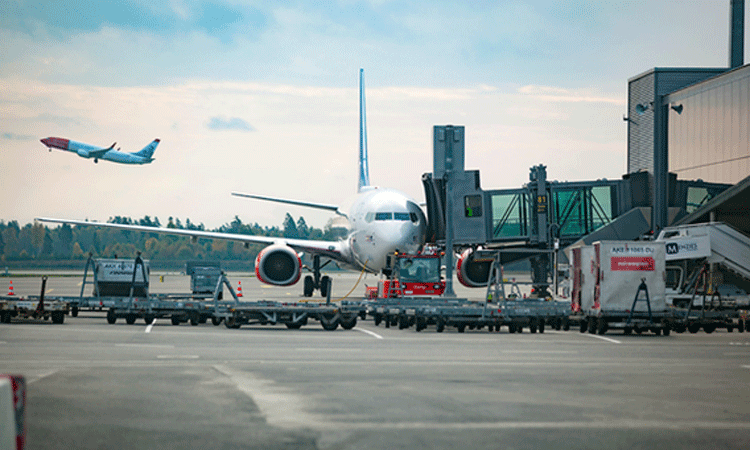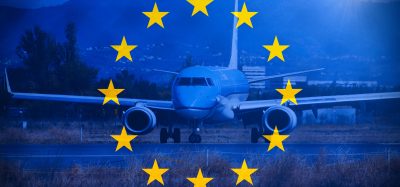Avinor’s Q1 2022: Improved traffic developments but challenges remain
- Like
- Digg
- Del
- Tumblr
- VKontakte
- Buffer
- Love This
- Odnoklassniki
- Meneame
- Blogger
- Amazon
- Yahoo Mail
- Gmail
- AOL
- Newsvine
- HackerNews
- Evernote
- MySpace
- Mail.ru
- Viadeo
- Line
- Comments
- Yummly
- SMS
- Viber
- Telegram
- Subscribe
- Skype
- Facebook Messenger
- Kakao
- LiveJournal
- Yammer
- Edgar
- Fintel
- Mix
- Instapaper
- Copy Link
Posted: 17 May 2022 | International Airport Review | No comments yet
Although there has been an increase in traffic developments during the first quarter of 2022 for Avinor, there is still room for improvement, as passenger volumes are at a level of 60 per cent of normal activity pre-pandemic.


Credit: Avinor
Despite positive traffic developments, the passenger volume in the first quarter is at a level of 60 per cent of normal activity before the pandemic. Due to the Omicron variant, figures were poor for traffic volume and commercial revenue in January and February 2022, while March 2022 saw good recovery. The outbreak of war in Ukraine on 24 February 2022 has had a negative impact on the traffic volume for flights through Norwegian airspace. Closed airspace over Ukraine and sanctions between the U.S./EU and Russia has led to changes to routes.
“The COVID-19 pandemic has had a huge negative effect on the entire aviation industry. The main focus in Avinor has been to ensure continuity and ongoing operations throughout this period. Work on rationalising operations is continued in order to secure the group’s financial position in the longer term,” said CEO of Avinor, Abraham Foss.
The government’s proposal for the revised national budget for 2022 was presented on 12 May 2022. It was proposed that that Avinor’s contribution to the development of a new airport in Bodø is reduced by 390 million (NOK), and that Avinor and the government share the risk of cost overruns between them. The government further proposes that Avinor is given a subsidy of 250 million (NOK) in Q2 2022 in the case that it is required to ensuring compliance with equity requirements. Based on the signals in the revised national budget, the board will reconsider the investment decision for a new airport in Bodø.
Increase in operating revenues for airport operations and air navigation services
Avinor’s operating revenues in the first quarter of 2022 were 1,760 million (NOK), which is a reduction of 5.2 per cent compared to the first quarter of 2021. Excluding government operating subsidies in the first quarter of 2021, operating revenues increased by 953 million (NOK) – 118 per cent.
TAKE A READ:
In airport operations, there was an increase of 198 per cent in the number of passengers in the first quarter of 2022 compared to the first quarter of 2021. Operating revenues for airport operations came to NOK 1,436 million, an increase of 136 per cent – 827 million (NOK) compared to the first quarter of 2021.
The traffic volume for air navigation services increased by 82 per cent (measured in the number of service units), while the number of aircraft movements at the airports increased by 46 per cent compared to the first quarter of 2021. Operating revenues for air navigation services increased by 49 per cent to 467 million (NOK) in the first quarter of 2022 compared with the corresponding period in 2021.
Avinor received 1,050 million (NOK) in taxable operating subsidy from the state. No operating subsidy has been received in the first quarter of 2022.
Total operating expenses in the first quarter of 2022 comprised 1,653 million (NOK), compared to 1,466 million (NOK) in the first quarter of 2021, which entails an increase of 12.7 per cent. Cost developments must be viewed in the context of a significantly higher traffic volume, both in terms of airport operations and air navigation services compared to the same period in 2021.
Traffic increase of 198.1 per cent compared to the first quarter of 2021
In the course of the first quarter of 2022, 7.4 million passengers travelled through Avinor’s airports. This is an increase of 198.1 per cent compared to the first quarter of 2021.
Domestic traffic in the first quarter 2022 increased by 137 per cent compared to the first quarter of 2022, while international traffic increased by 855.1 per cent. Offshore helicopter traffic saw a decline of 1.2 per cent.
Over the past 12 months, average punctuality was recorded at 86 per cent and average regularity at 99 per cent throughout Avinor’s network of airports. The internal targets for punctuality and regularity are 88 per cent and 98 per cent respectively.
Continued challenging financial situation
Avinor remains in a challenging financial situation with a profit after tax of -434 million (NOK) in the first quarter and an equity ratio of 26.3 per cent. Equity calculated according to section five of the articles of association comprised 37.2 per cent. The group’s cash flow before changes in debt was -847 million (NOK) in the first quarter.
Scaling up operations to meet increased traffic volumes is carefully balanced against increased operating costs. In addition, the project portfolio is continuously assessed and prioritised. An extraordinarily strong increase in prices for building and construction projects represents an increased risk in Avinor’s project portfolio.
Facilitating development and expected changes in air traffic
“Mobility and efficient air transport are essential for social development, as well as for the growth of the Norwegian travel industry and businesses. Avinor’s corporate social responsibility entails that the Group facilitates further development and expected changes in air traffic. We are aware of the challenges Avinor and aviation are facing when growth and greenhouse gas emissions are to be reconciled in sustainable value creation. At the same time, we are dependent on innovation and technology developments to unite the goals of emission reductions and expected traffic growth,” added Foss.
Related topics
Air traffic control/management (ATC/ATM), Airport development, Airside operations, COVID-19, Emissions, New technologies, Passenger experience and seamless travel, Social responsibility, Sustainability, Terminal operations


















